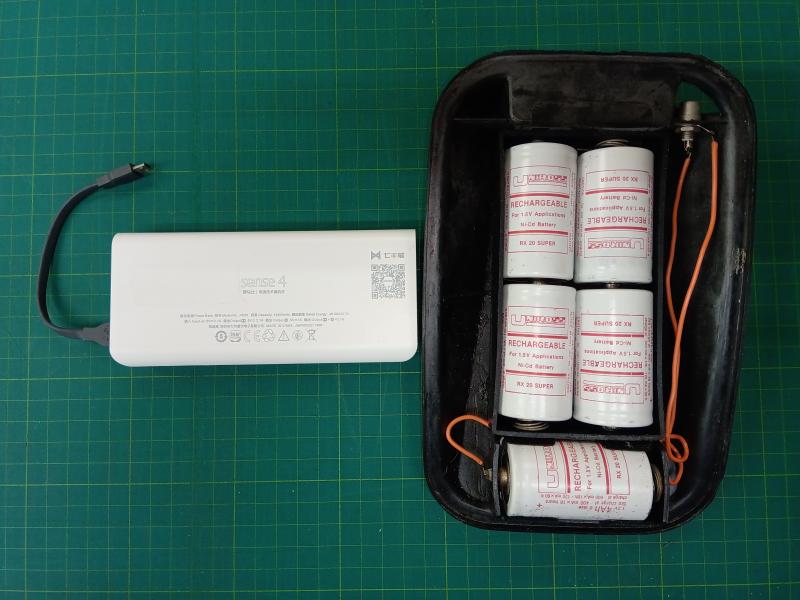Comparing 1992 and 2017 Batteries
First published: 18th October 2019

Yesterday, I found an old battery pack in a drawer. I constructed it in about 1992 as an external pack for a small notebook computer. It is very simple, five size D Ni-Cd cells in a case made from the plastic shell of a Transit wing-mirror. The capacity is 4Ah at 6V (the computer used a 6V supply), which is 24Wh. The pack weighs 740g.
As a comparison, I looked at a Power Bank that I got in 2017. It doesn't have the battery technology marked on the case, but it is almost certainly Li-ion. The label does say, "Capacity: 10400mAh Rated Energy: 38.5Wh/3.7V Output 5V". It weighs 280g.
| Pack | Year | Energy Capacity | Weight | Energy Density |
|---|---|---|---|---|
| Transit Pack | 1992 | 24.0Wh | 740g | 32.4Wh/kg |
| Power Bank PH50 | 2017 | 38.5Wh | 280g | 137.5Wh/kg |
They are both packs I have used to extend the on-time of a portable computer (yes, a smartphone is a portable computer), and they both use the best commonly-available consumer technology of the time, so the comparison is like-for-like. What has happened in 25 years? Battery technology has improved by more than a factor of four. The 2017 pack holds more power, is smaller and weighs less.
I would like to thank John Goodenough, Stanley Whittingham and Akira Yoshino, winners of the Nobel Prize in Chemistry 2019 for this improvement.
What am I going to do with my 1992 battery pack? I haven't tested it, but the Ni-Cd cells have probably deteriorated and are only suitable for recycling. The case I might reuse for another project.

